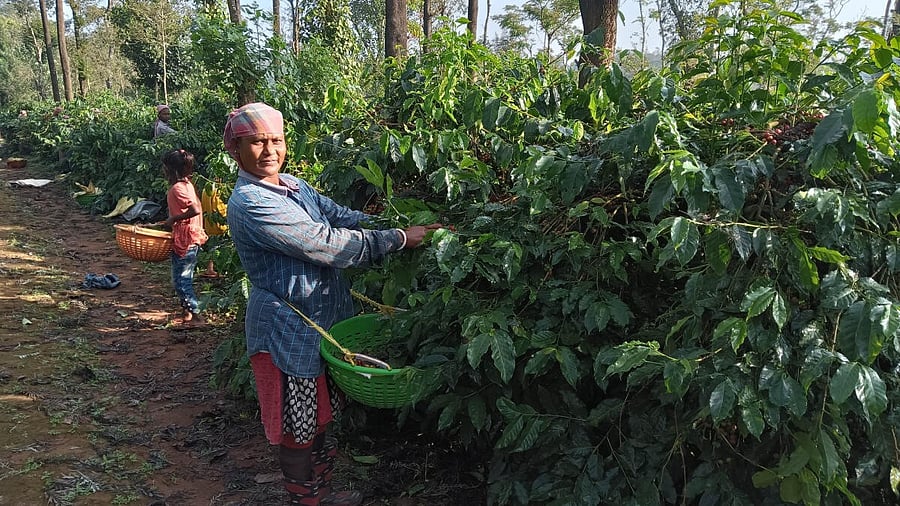
The harvesting season will begin next month in the growing regions of Chikkamagaluru, Hassan and Kodagu.
Credit: DH File Photo
Chikkamagaluru: Coffee production in India is likely to witness a marginal growth of around 3% over last year’s final estimate of 3.63 lakh metric tonnes, according to Karnataka Planters Association, a premier industry body.
The harvesting season will begin next month in the growing regions of Chikkamagaluru, Hassan and Kodagu.
For 2024-25, the Coffee Board of India has projected the bean production at 4,03,000 metric tonnes for 2025-26. Arabica production is pegged at 1,18,125 metric tonnes, while Robusta output is projected to be 2,84,875 metric tonnes.
However, the Karnataka Planters Association (KPA) estimates it to be marginally higher due to the climate change impacting the plantations. KPA estimates the Arabica output at around 1-1.10 lakh tonnes and Robusta output between 2.6 lakh tonnes to 2.70 lakh tonnes for 2025-26.
During the post-blossom estimates for the current year, the Coffee Board has projected Arabica production at 1,18,125 metric tonnes and Robusta output at 2,84,875 metric tonnes. Last year, the final production stood at 3,63,500 metric tonnes comprising 1,05,700 metric tonnes of Arabica and 2,57,800 metric tonnes of Robusta.
While the Coffee Board is yet to come out with its post-monsoon estimates, the KPA’s assessment based on the feedback from its member-growers does not reveal a rosy picture for the crop this year.
“The impact of climate change on the plantation industry in Karnataka is significant and serious. Global warming with unpredictable rainfall is causing extreme drought, landslides and soil erosion, damaging crops, depleting soil and plant health, survival, reducing crop yields and is a threat to long-term sustainability of coffee estates,” said Arvind Rao, Chairman, KPA.
According to KPA, over the last decade, Indian coffee growing regions have witnessed irregular rainfall, long dry summer periods that led to a drop in the production. Despite the area under coffee cultivation going up in both traditional and non-traditional regions, the bean production has not grown proportionately. Arabica coffee, which is the most-preferred variety globally for its rich aroma, is highly dependent on favourable climatic conditions and due to a white stem borer (WSB) attack which occurs due to erratic climatic conditions in the growing regions of Karnataka.
The global coffee sector is currently defined by price surges driven by tightening supply due to severe weather disruptions across major growing regions. The coffee production scenario for Karnataka in the 2024-25 marketing year (October 2024-September 2025) is characterised in Robusta production but volatility in Arabica output, primarily due to the impact of erratic weather patterns,” said Rao.
Heavy rains between May and September this year have damaged the crop in all the growing regions of Chikkamagalur, Hassan, and Kodagu, he said.
Karnataka alone contributes about 70% of India’s total coffee production at 2,56,000 metric tonnes. The Coffee Board, in its post-blossom estimates, projected Karnataka’s production at 2,80,000 metric tonnes for 2025-26, a growth of 9.5% over the previous year.
Karnataka Planters Association is holding its 67th annual general meeting in Chikkamagaluru on Tuesday which will be inaugurated by K J George, minister of energy, government of Karnataka.